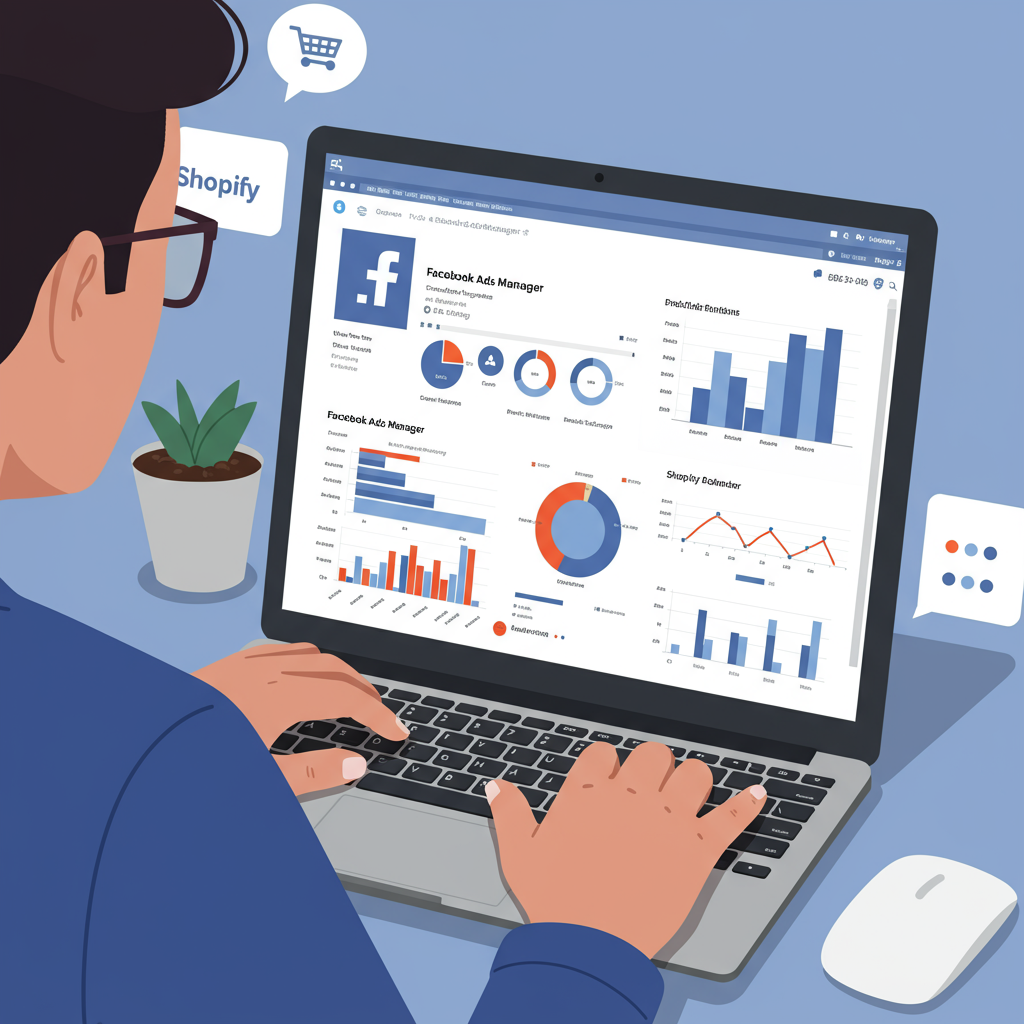My Comprehensive Guide to Driving E-commerce Growth Through Targeted Advertising
Hello fellow entrepreneurs! As someone who’s navigated the exciting, sometimes challenging, world of e-commerce, I know the constant quest for effective sales channels.
If you’re running a Shopify store, you’ve likely heard the buzz about Facebook Ads. But how do you actually turn that buzz into tangible sales? That’s precisely what I want to demystify for you today.
In my experience, Facebook and Instagram (part of the Meta Ads platform) offer an unparalleled opportunity to connect with your ideal customers, drive traffic, and ultimately, boost your Shopify sales.
It’s not just about throwing money at ads; it’s about strategic targeting, compelling creatives, and smart optimization. Let me walk you through my proven approach.
Before we dive deep, let’s ensure you have the foundational elements in place. You’ll need an active Shopify store, of course, and a Facebook Business Manager account.
The Business Manager is your central hub for managing all your Facebook assets – pages, ad accounts, pixels, and more. If you don’t have one, set it up at business.facebook.com. It’s straightforward.
Next, and this is absolutely crucial, you need to install the Facebook Pixel on your Shopify store. The Pixel is a small piece of code that tracks visitor activity on your website.
Why is it crucial? Because it allows you to measure the effectiveness of your ads, optimize for conversions, and build powerful custom audiences for retargeting.
Shopify makes Pixel installation incredibly easy. Go to your Shopify admin, navigate to Online Store > Preferences, and you’ll find a section to paste your Facebook Pixel ID.
Once the Pixel is active, it starts collecting data on page views, add-to-carts, purchases, and more. This data is gold for your advertising efforts.
Now, let’s talk about audiences – the people you want to reach. This is where Facebook’s targeting capabilities truly shine. I typically start with three main types.
First, Core Audiences: These are built using demographics (age, gender, location), interests (hobbies, brands they follow), and behaviors (online shopping habits). Think broadly about who your ideal customer is.
Second, Custom Audiences: These are incredibly powerful. I use them to retarget people who have already interacted with my brand. This includes website visitors (especially those who added to cart but didn’t purchase), customer lists (upload your email list!), and people who engaged with your Facebook or Instagram pages.
Third, Lookalike Audiences: Once you have a solid Custom Audience (e.g., your purchasers), Facebook can find new people who share similar characteristics. This is how you scale your campaigns effectively.
With your audience strategy in mind, it’s time to choose your campaign objective. For Shopify sales, I almost exclusively focus on “Conversions” or “Catalog Sales.”
The “Conversions” objective tells Facebook to find people most likely to complete a specific action, like a purchase, on your website. This is your bread and butter for direct sales.
“Catalog Sales” is fantastic for e-commerce, especially if you have many products. It allows you to run Dynamic Product Ads (DPAs), showing specific products to people who viewed them or similar items on your site.
Your ad creatives – the images, videos, and copy – are paramount. Even the best targeting won’t work with poor ads. I always aim for visuals that stop the scroll.
High-quality product photos, lifestyle shots, or engaging short videos showcasing your product in use perform best. Don’t be afraid to test different visual styles.
For ad copy, focus on benefits, not just features. What problem does your product solve? How will it make your customer’s life better? Include a clear Call to Action (CTA) like “Shop Now” or “Learn More.”
When setting your budget, you can choose between a daily budget or a lifetime budget. For most campaigns, I prefer a daily budget as it gives me more flexibility to adjust.
Start with a modest budget, perhaps $10-$20 per day, and scale up as you see positive results. Don’t overspend before you’ve validated your audience and creative.
Monitoring your performance is an ongoing process. I constantly check key metrics like Return on Ad Spend (ROAS), Click-Through Rate (CTR), Cost Per Click (CPC), and Cost Per Mille (CPM).
ROAS is your ultimate indicator: if you spend $100 and make $300 back, your ROAS is 3x. Aim for a ROAS that covers your costs and leaves a healthy profit margin.
A/B testing is your best friend. Test different ad creatives, different headlines, different audiences. Even small tweaks can lead to significant improvements.
If a campaign isn’t performing, don’t be afraid to pause it and try something new. It’s better to cut losses early than to bleed money.
What do you think about this detailed guide so far? I’d love to hear your thoughts and if you’ve found these insights helpful for your Shopify journey.
Finally, consider retargeting. People rarely buy on their first visit. Set up campaigns specifically for those who added to cart but didn’t purchase, or even past customers for repeat business.
Dynamic Product Ads, as mentioned, are a game-changer for retargeting. They automatically show people the exact products they viewed on your Shopify store, often leading to high conversion rates.
In conclusion, mastering Facebook Ads for your Shopify store is an ongoing journey of learning and optimization. It requires patience, testing, and a willingness to adapt.
But with the right strategy, a keen eye on your data, and compelling ads, you can unlock a powerful sales channel that drives consistent growth for your e-commerce business. I wish you the best of luck!






